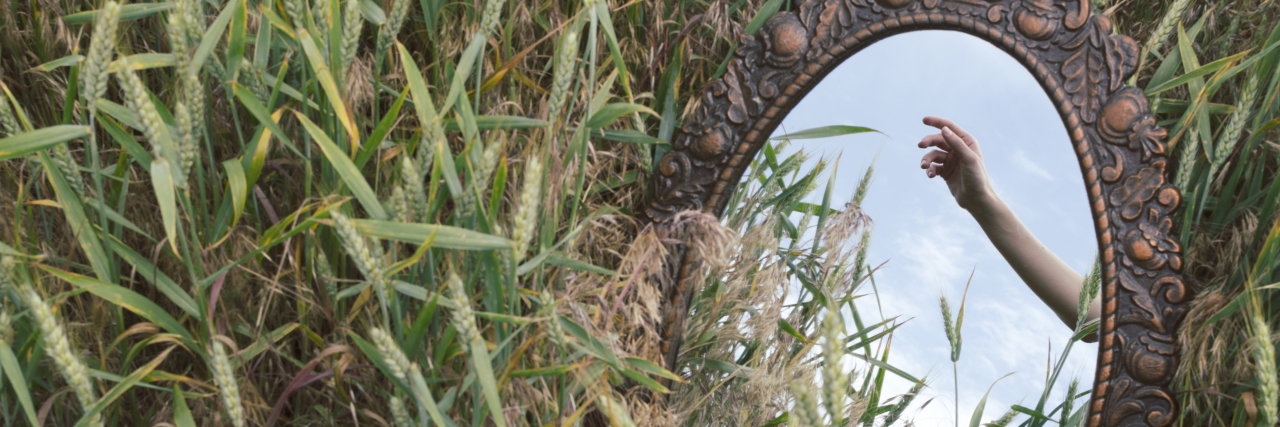Invisible disabilities often fly under the radar — both in name and in everyday life. Symptoms of invisible health conditions are often so hidden that the challenges of living with an invisible disability can often be frustrating and completely unexpected. Here are five of the most well-kept secrets of my life with an invisible disability — finally revealed.
1. I’m not doing as well as I may look with my invisible disabilities.
The constant pressure to keep invisible disabilities inconspicuous can be draining — and my life is no exception. I try to present myself as competent, confident, and successful, but in projecting a “healthy” image, it’s easy to completely miss my symptoms. The people who are closest to me know that I’m a hard worker, but I sometimes struggle to tell them that some days, I feel completely physically fatigued and emotionally spent because of my health conditions. It may be easy to assume that I “have my life together,” but there’s so much that photographs and casual chats with friends can’t reveal about my wavering health.
2. Living with invisible conditions forces me to reckon with my own privilege.
Not everyone in the disability community has the same amount of privilege, and disability visibility can often affect how privileged people in the community are. As someone with primarily invisible conditions, I can avoid certain ableist experiences that people with more visible disabilities often can’t — like being asked invasive questions in public, being spoken to with condescension, and facing hiring discrimination based on physical appearance. Consequently, I try to remain mindful of my privilege when I enter disability-focused spaces, but sometimes I still struggle to see the benefits of being invisibly disabled, especially when I see my symptoms mitigated or invalidated. Accepting my privilege and reconciling it with the challenges of living with an invisible disability will likely always be a work-in-progress.
3. It’s easier for me to share my experiences with invisible disabilities online than it is to share in person.
I spent years trying to make my health conditions as invisible as possible in order to escape potential questions and judgments, but my decision to hide left me feeling closed-off and disconnected. When I first opened up about my life with invisible conditions, I assumed that sharing my experiences online would be far easier than speaking to others about them in person. Although opening up about my health online was extremely difficult at first, it became far easier with time — and the Internet soon became my disability “safe haven.” However, I still struggle heavily with sharing my experiences in person and choosing to accept medical help for my conditions. I’m still healing from my years of hiding my invisible disability experiences, but with time, growth, and acceptance, I’m slowly learning to open up wherever I may be.
4. Living with invisible disabilities can be hard.
When I was growing up, and my physical disability was more visible, I wrongly assumed that life with an invisible disability would be easier than the life I was living. As time wore on and I began to present more “able-bodied,” though, I realized that living with invisible conditions is far from easy. I’ve convinced myself that troubling symptoms aren’t significant because they aren’t visible, have been met with disbelief by people both inside and outside of the disability community, and have spent years gradually unpacking my relationship with my invisible conditions in therapy. My experiences have made me mistrustful of medical professionals, uncertain of my future career success, and worried about how rapidly my health may change as I age. Managing my invisible conditions — and how I perceive them — and balancing my “typical twentysomething” life can often be tremendously challenging.
5. Sometimes I wish my invisible disabilities weren’t so invisible.
As someone who’s been both visibly and invisibly disabled, it can be easy to romanticize the more visibly disabled period of my life without fully recognizing how difficult it was. On days when I’m in intense pain, am struggling with anxiety or depression symptoms, or feel deep in my eating disorder, I wish there were more visible signs that I’m not feeling my best. I feel so much pressure to ignore my pain or push through my depression because I worry about how others will perceive me if I look healthy but share that I don’t feel physically or mentally well. Even though I sometimes wish that my invisible conditions would stand out a little bit more, though, I have had moments in which I accept my circumstances and learn to be gentler on myself. I’ve been visibly disabled, and I’ve been invisibly disabled, but no matter how my health looks, I’m learning to manage it day by day.
Getty image by

